Trainers Say This Simple Stretch Can Reduce Back And Pelvic Pain
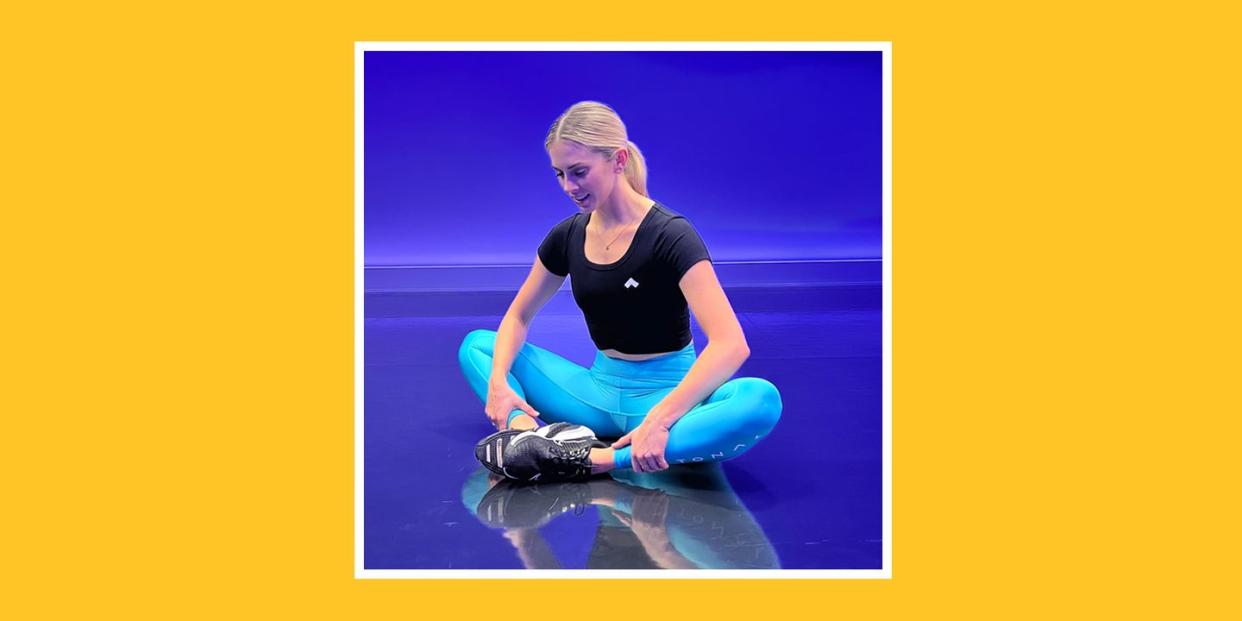
"Hearst Magazines and Yahoo may earn commission or revenue on some items through the links below."
If you’re anything like me, your lower body and hips are perma-tight from sitting All. Day. Long. That stiffness shows up after getting out of a chair, bounding up the stairs, or squatting down to pick something up. It doesn't have to, though. The butterfly stretch is here to serve.
It's a simple seated position that's super accessible and effective. “The butterfly stretch targets the hip flexors as well as adductor muscles that run along the interior side of the femur also referred to as the groin,” says Ash Wilking, CPT, a certified personal trainer and Tonal coach. While a butterfly stretch may seem simple, it scores major points for hip mobility, increasing range of motion in the adductors, and improving any lower-back, hip, or pelvic pain.
Meet the expert: Ash Wilking, CPT, is a certified personal trainer and Tonal coach. You may also recognize her from her Instagram Live workouts with WH.
That's because the adductor muscles play a key role in coordinating movements. “The main function of the adductor muscles is to pull the thighs together and rotate the upper leg as well as to stabilize the hip, where the hip flexors assist in lifting the thigh creating flexion at the hip,” says Wilking. When you have limited range of motion (tight adductors), it can create a breakdown in the kinetic chain, or the interconnected group of muscles that work together to perform movements (from feet up through the spine). That turns into decreased performance and higher the risk of injury, she explains. (No need to panic, promise!)
What's more, the pose can be relaxing and a great way to start or end your day. Noticeably tight hips or not, the butterfly stretch is a must for anyone and everyone.
With that in mind, read on for everything you need to know about doing the butterfly stretch with perfect form, common mistakes to avoid, and variations of the move, according to an expert trainer.
How To Do A Butterfly Stretch With Perfect Form
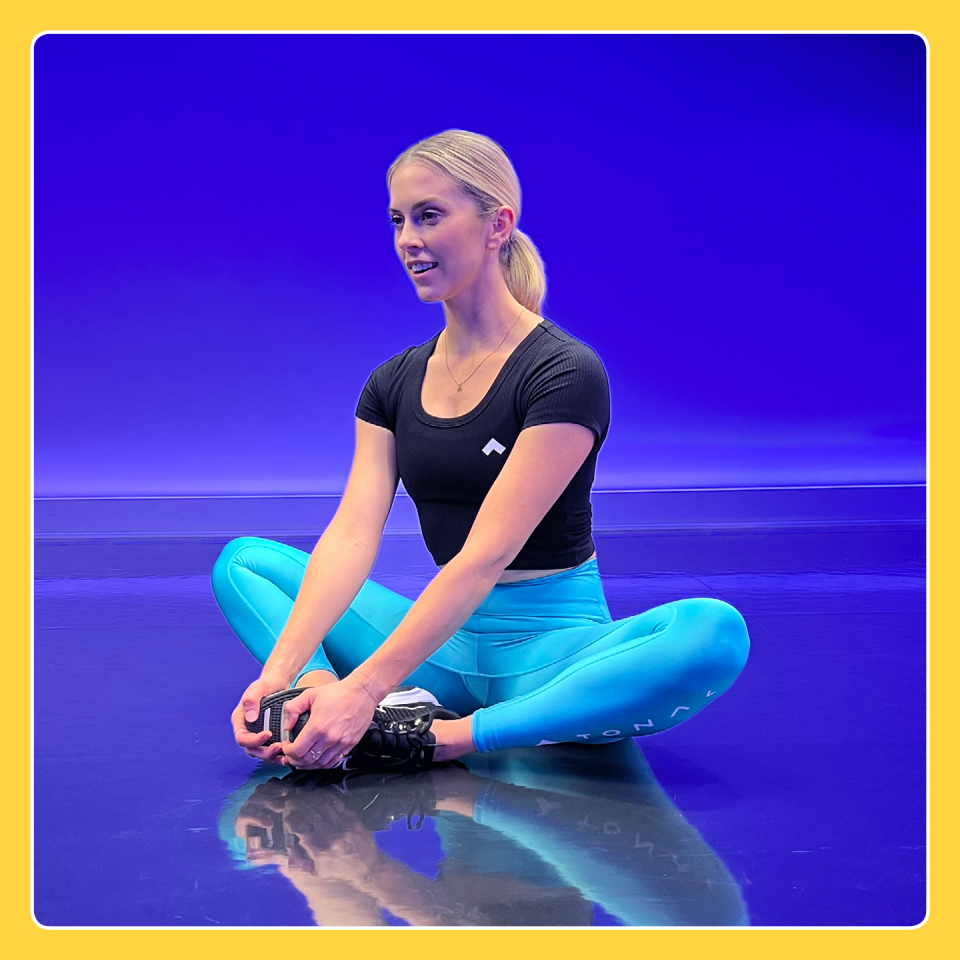
How to:
Sit on the floor with legs bent and the soles of your feet pressed together.
Allow your knees to gently fall to the sides (like a butterfly) and place hands on your feet or shins. The closer your feet are to your hips, the more challenging the pose.
Inhale and elongate your spine and root into your sit bones.
Exhale and relax your knees closer to the ground.
Hold 30 seconds, then slowly release. That's one rep.
Repeat 3 to 5 times.
Form Tips For Ultra-Tight Hips
Balance your weight evenly between your sit bones, hips, and pelvis. Avoid leaning to one side.
Open your knees slowly, and do not press down on your knees with force.
Find a position that feels challenging, but not painful. Do not go past that “good stretch” feeling.
Place yoga blocks or towels under your knees for extra support during the stretch.
Do not hold your breath. Wilking suggests inhaling through your nose for 4 seconds, holding for 2 seconds, and slowly exhaling through your mouth for 6 seconds.
Butterfly Stretch Benefits
There’s a lot to love about the butterfly stretch, whether you’re super flexible or just getting started on your stretching routine. Here are the major rewards you can expect when you add this graceful lengthener to your repertoire.
Increase hip mobility. Hip mobility is essential for everyday movements like picking up kids or groceries, using stairs, and getting in and out of a chair, and the butterfly stretch is a great way to increase that range of motion, says Wilking. To focus on mobility, Wilking says to hold the butterfly stretch for 30 seconds, then attempt to bring the knees together for 5 to 10 seconds, before slowly lowering the knees back down. Repeat 3 to 5 times and test a new range of “butterfly motion” between reps.
Reduce pelvic and lower back pain. “The butterfly stretch will decrease pain in the pelvis and back by reducing the risk of pelvic misalignment (when your pelvis falls out of a neutral position and tilts too far forward or backward),” says Wilking. One study even found that the butterfly stretch can help reduce chronic pelvic pain in women when practiced consistently.
Improve posture. Stretching the hip flexors improves posture by reducing an anterior pelvic tilt (when the hips tilt forward) which can create a bigger arch in the lower back and cause pain, says Wilking. Plus, studies show that tight hip flexors can contribute to poor posture and lower back pain, so the butterfly stretch can help loosen-up tension or tightness, says Wilking.
Minimize the risk of injury. If your groin and hips are extra tight from sitting all day, research shows you’re at a higher risk of injury. Luckily, the butterfly stretch is an optimal way to keep you limber and minimize injury during an activity or sport by exposing the muscles to an increased range of motion which can prevent any pulls, strains, or tears, says Wilking.
Common Butterfly Stretch Mistakes To Avoid
Forcing your knees to the ground. Attempting to stretch too far too soon can lead to muscle strain, says Wilking. Never forcefully push your knees down because this will do more damage and outweigh any benefits. Wilking suggests using yoga blocks or towels to assist your range of motion and avoiding any temptation to smush your knees to the floor. Trust us, this will help in the long run.
Holding your breath. Don’t! Forget! To! Breathe! You might unconsciously hold your breath if the stretch is a little uncomfortable, but deep breathing will help release any muscle tension. “Diaphragmatic breathing (deep breathing that helps your body relax) will assist in relaxing the central nervous system which can assist in deepening the stretch in the muscle,” says Wilking. “Inhale through your nose for 4 seconds, hold for 2 seconds, and slowly exhale through your mouth for 6 seconds.”
Bouncing. You might think bouncing your knees will help maximize your range of motion, but research shows it does the opposite because you can injure yourself and actually add to any muscle tightness. Not to mention, the purpose of the stretch is to relax and lengthen the muscles, so remember to hold the stretch for at least 30 seconds, breath deeply, and use slow and controlled movements when getting in and out of position.
Rounding your back. It can be tempting to round your back and drop your head forward but keeping an upright spine and your core engaged will help you deepen the stretch in the adductors, says Wilking. A long and tall spine will also help maximize the stretch in the hip flexors and groin.
Butterfly Stretch Variations For All Levels
Slight Lean Forward
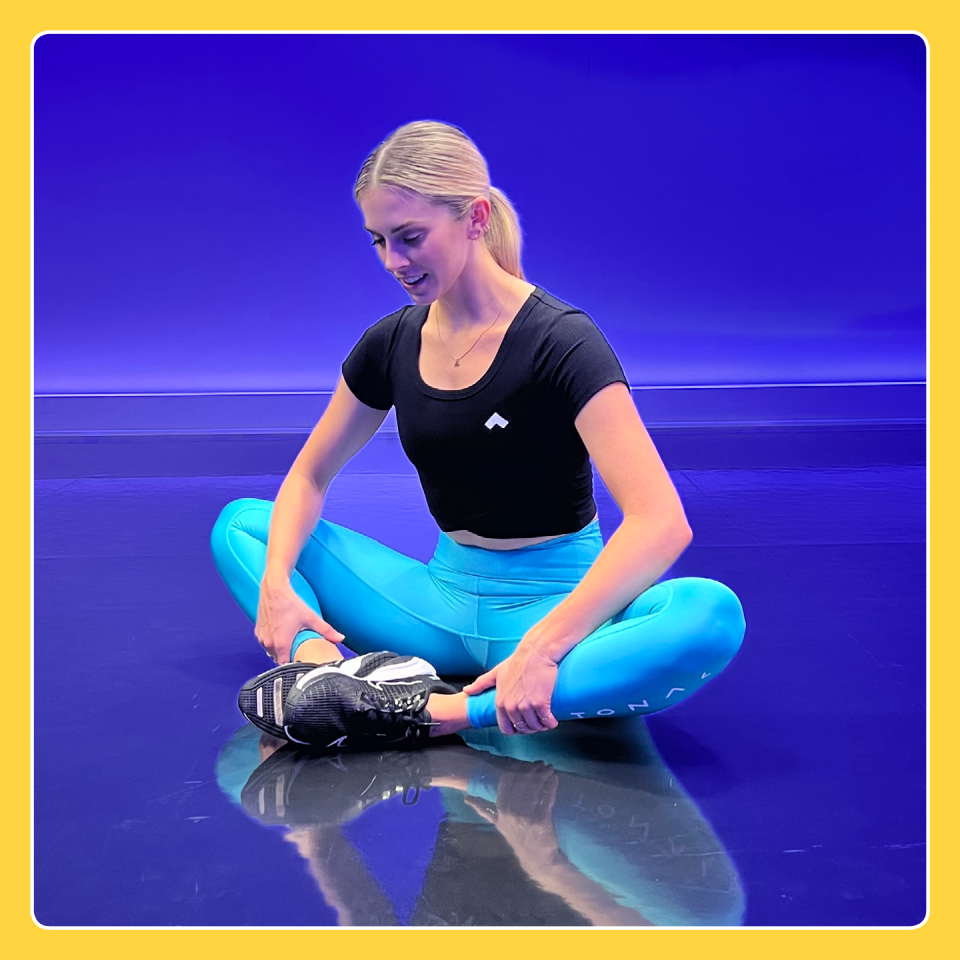
This is an excellent modification for anyone with back issues. You can modify the stretch by leaning slightly forward at your hips to ease back tension. When you make this adjustment, make sure you don't round your back or drop your head.
Half Butterfly With A Straight Leg
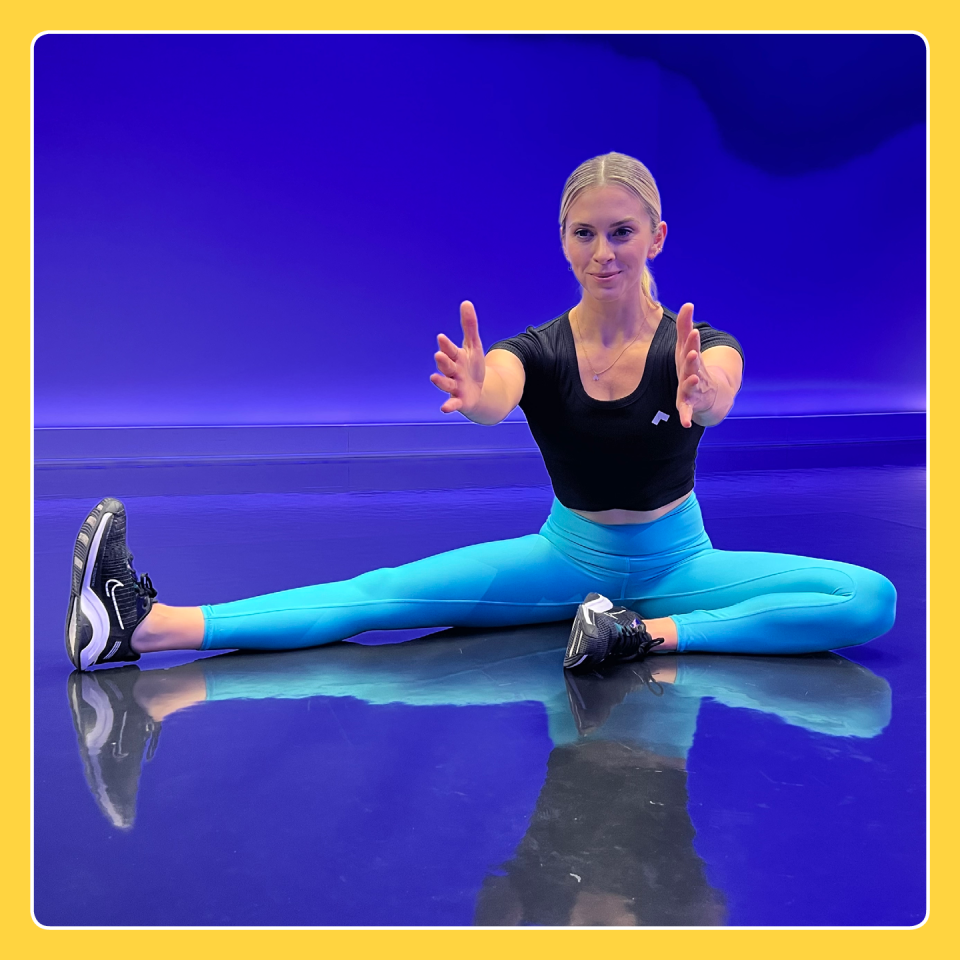
A great way to add variety and include your hamstrings is to straighten one leg at about a 45-degree angle while keeping the other in a butterfly position, says Wilking. Without rounding the spine, lean the torso forward at the hips and hold 30 seconds before repeating on the other side. Do 3 to 5 reps on each side.
Extended Butterfly With Rotation
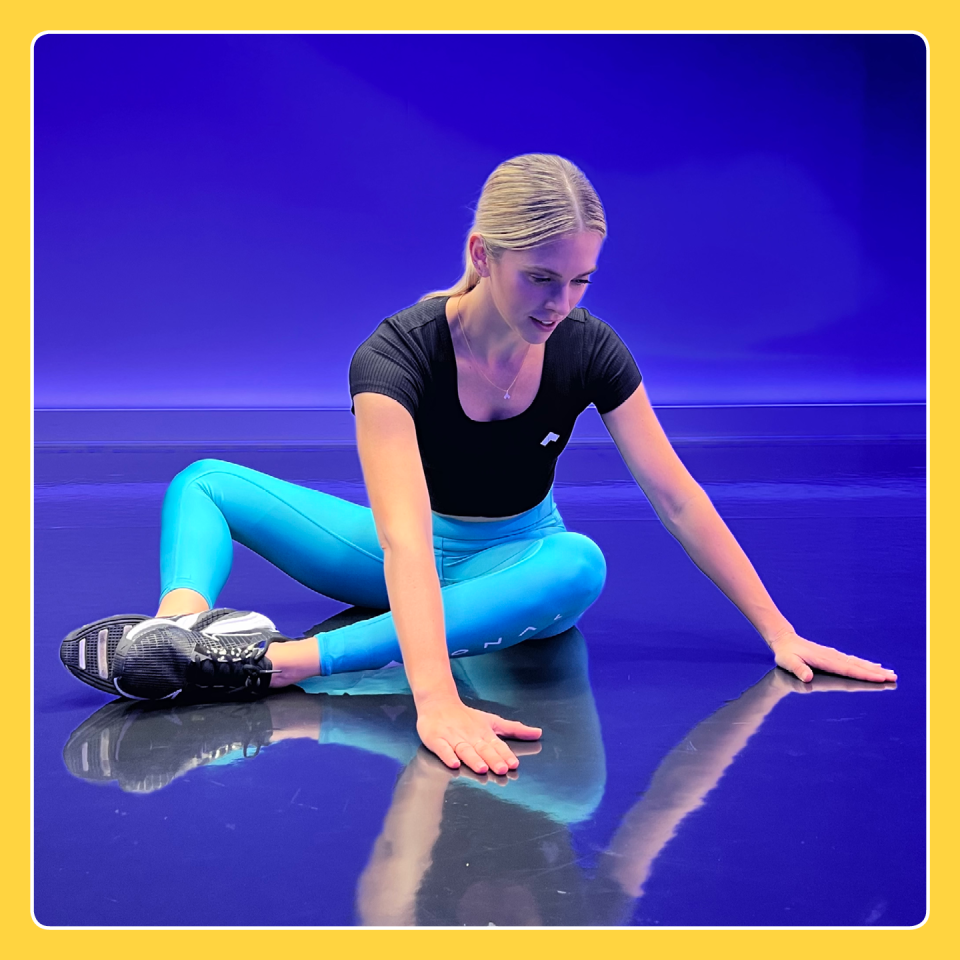
From the butterfly position, move both feet out a few inches farther from your body and rotate your torso toward one thigh as you place your hands on the floor outside of the leg. “This will add a stretch on the outside of the hip and will continue to stretch the interior side of the high and thigh,” says Wilking. Hold for 30 seconds and repeat for 3 to 5 reps before switching sides.
90/90 Hip Stretch
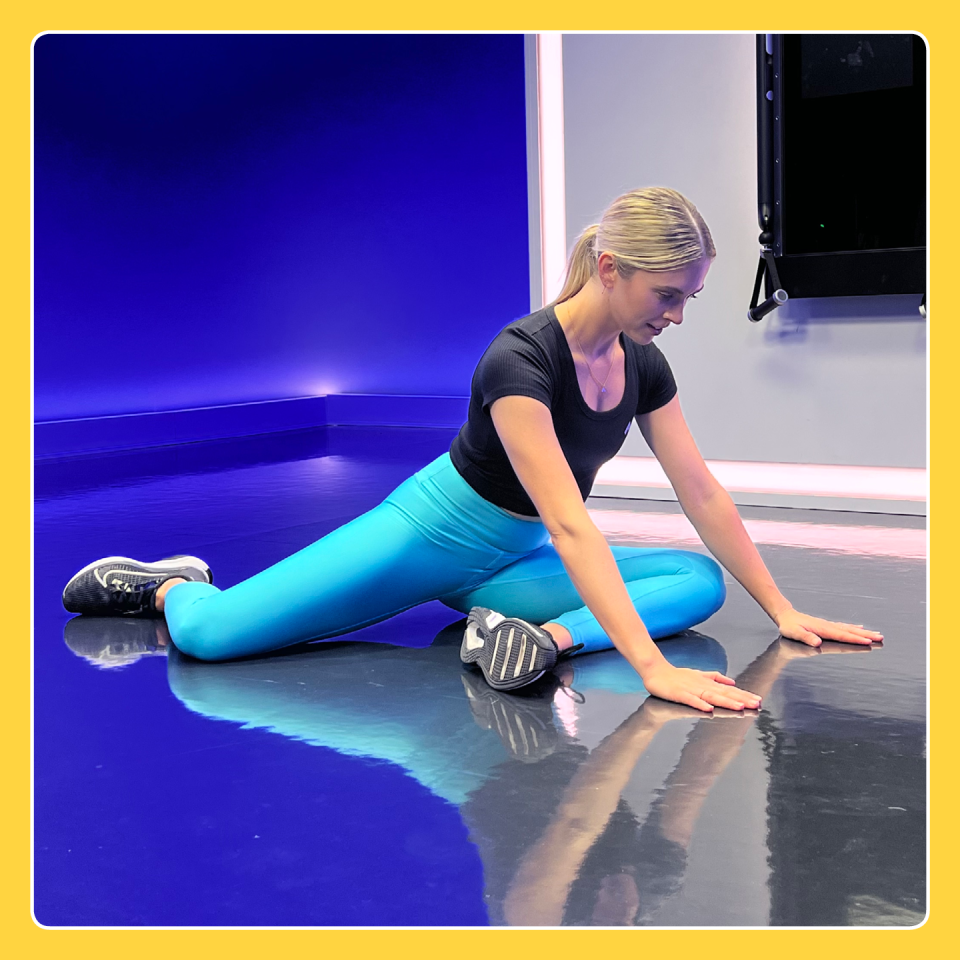
If you’re looking to level-up and give your hips some extra love, a 90/90 hip stretch is a great complement to the butterfly stretch. This position will give a different form of resistance on the adductors while adding a quad stretch into the mix, says Wilking. Start seated the half butterfly with straight leg position. Then, bend the extended leg behind you as you rotate the thigh internally and place the shin behind the hip,. Think about sitting into your hips equally and not leaning toward one side.
You Might Also Like

